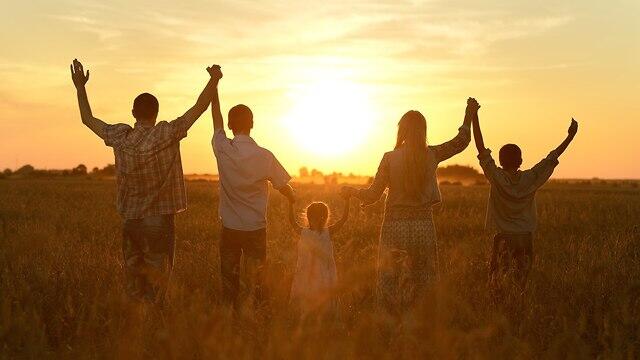Getting your Trinity Audio player ready...
According to data published Wednesday by the Central Bureau of Statistics, in 2022 Israel had 2.25 million families, compared to 1.91 million in 2013.
Read more:
The composition of families in Israel varies among different population groups. The percentage of families with parents and children under the age of 17 in the Arab population (approximately 59%) is higher than the percentage in the Jewish population (approximately 45%).
The percentage of families without children is higher in the Jewish population (29%) compared to the Arab population (12%), with both populations having a similar percentage of single-parent families with children under 17 (6%).
The CBS data also reveals that the average household size in Israeli families in 2022 was 3.69 members. Jewish households averaged 3.58 members, while Arab households averaged 4.3 members.
In larger cities, the highest average household size was found in Beit Shemesh (4.96), Bnei Brak (4.73), and Jerusalem (4.25), all ultra-Orthodox communities . Cities with significantly lower averages included Bat Yam (2.91), Tel Aviv (2.98), Ramat Gan (3.05), Haifa (3.09), Herzliya (3.15), and Rishon LeZion (3.17).
In Haredi families, the average household had 5.33 members, in very religious families at 4.79 individuals, and in religious families at 3.85 individuals. Among secular households, the average household size was 3.18 individuals. It's important to note that these figures are for individuals up to the age of 17.
In 2022, there were approximately 143,000 single-parent families with children under 17 in Israel, accounting for some 12% of all families with children under 17, comprising 265,000 children. The average number of children under 17 in single-parent families in Israel was 1.86, compared to about 2.51 in two-parent families. About 86% of single-parent families with children under 17 were headed by women.
So, what does the typical Israeli family look like? In 2022, there were around 1.95 million couples in Israel. The majority of couples (about 94%) were married to each other. The remaining couples, approximately 117,000, were cohabitating. About 109,000 of them were Jewish couples, and the rest were categorized as "others." According to the Central Bureau of Statistics, the age composition of cohabitating Jewish couples was younger than that of married couples. In about 53% of these couples, the woman was under 35, compared to only about 20% of married women.
What about lifestyle choices from a religious perspective? 47% of families in Israel identify as secular, 24% as traditional, 14% as religious or very religious, 12% as ultra-Orthodox, and 3% as mixed. Among Arabs, 59% identify as traditional, 30% as religious or very religious, 9% as secular, and 2% as living a mixed lifestyle.




